Art History Exam 3
1/50
There's no tags or description
Looks like no tags are added yet.
Name | Mastery | Learn | Test | Matching | Spaced |
|---|
No study sessions yet.
51 Terms
what was the enlightenment and how were its values reflected in the art of the 18th and 19th centuries?
time period from c.1685-1815
age of reason
intellectual movement
leaders promoted the scientific method, mass education, and more egalitarian principles
what was the grand tour? what are vedute?
it was a tour of Europe, traveling to see the historical sites, like an educational vacation
vedute views are views of famous sites that people would see on the Grand tour
highly detailed, usually large-scale painting of a cityscape
what was the structure and function of the royal academy?
the royal academy replaced the guild
artists get training, patrons and lots of support here
it was very selective and exclusive- not everyone got in
2 women founded the academy
the French Royal academy was the model for all others
what were the characteristics, values and themes of neoclassical and romantic art and architecture?
neoclassical- focused on serious, moralizing themes inspired by Ancient Greece and Rome, emphasizing rationality and simplicity .
Romanticism- emphasized individual emotion, imagination and the sublime power of nature. also depicts horror, violence, the mysterious, unexplained, or supernatural.
what was the gothic revival?
an architectural style that drew its inspiration from medieval architecture
viewed to be dark and mysterious
period: 1750-1880
why did the middle ages appeal to romantic sensibility?
what were the themes of romantic landscape painting in England and the US?
storms, shipwrecks, and the mysterious light of dusk and dawn
how were non-europeans viewed and depicted during the 18th and 19th centuries?
people from other cultures were often depicted as exotic curiosities.
during these periods, europeans generally viewed native americans (and many other cultures) as less advanced.
what is orientalism?
European views and portrayals of cultures in the “eastern” world, including the middle East and North Africa
what are the main themes and concerns of Indigenous North American people? what were the different regional expressions, materials and functions of art?
they utilized materials from their environments
depending on their lifestyles within these contexts, some groups built more monumental works while others made smaller and more portable items.
what are the basic beliefs of Islam, Hinduism, and Buddhism as reflected in the art and architecture of South and SE Asia?
what was the impact on the industrial revolution on 19th and 20th century and architecture?
what impact did colonialism have on south and southeast asia?
colonial powers established Western-style education systems and promoted European languages.
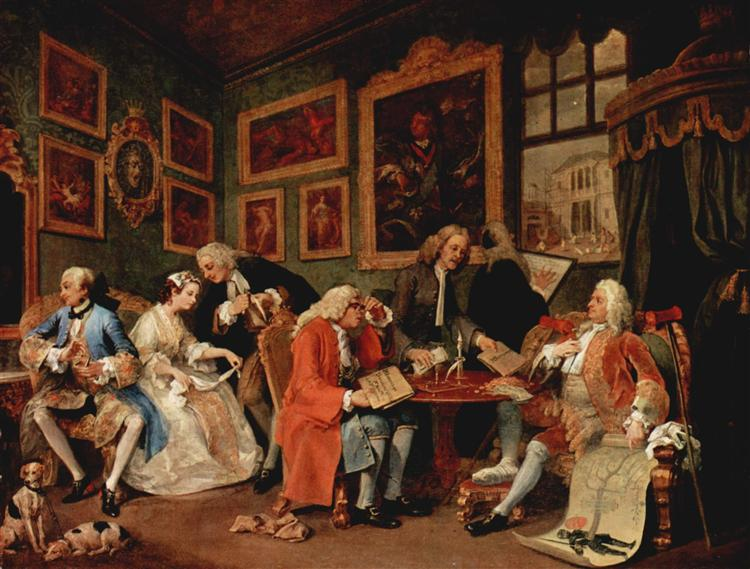
what is this?
The Marriage Contract - from Marriage a la Mode
William Hogarth
Moral Genre/Satire
England 1743 (18th century)
oil on canvas
this marriage is not for love, it is for a business contract
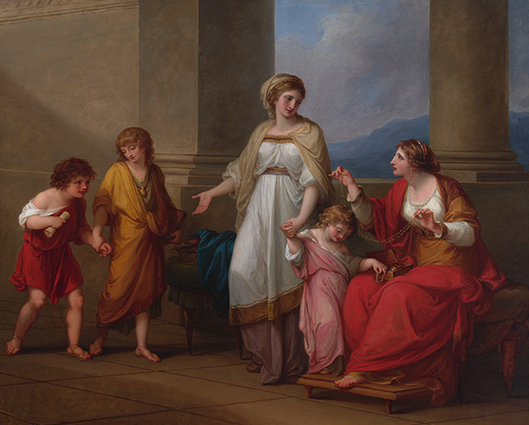
what is this?
Cornelia Pointing to Her Children as Her Treasures
Angelica Kauffmann
Neoclassical
England 1785 (18th century)
oil on canvas
reinforces the idea that women’s place is in the home
uses primary colors
The Death of General Wolfe
Benjamin West (american)
Neoclassical
England 1770 (18th century)
oil on canvas
clear, symmetrical
atmospheric perspective
Wolfe was a British general
Depicts French and Indian war - britain is fighting france
similar to images of jesus
neoclassic idea- his death is heroic and noble, sacrificing for the greater good

what is this?
Oath of the Horatii
Jacques-Louis David
Neoclassical
France 1784 (18th century)
oil on canvas
Louis the 16th was the patron of this work
david is trying to reinforce good virtues in this work
the image is trying to instill loyalty and honesty to the king from the people
roman architecture and roman outfits are present
3 soldiers on the left are pledging their oath to the man in the center, who is supposed to be their father, or the representative of the country (Horas) (Rome)
the women on the right are the mothers and wives- they are upset because the men in their life are going to go out and fight and they may die
Self-Portrait with Two Pupils
Adelaide Labille-Guiard
French Portraiture 1785 (18th century)
oil on canvas
these portraits were a way for women to push back against the limitations they faced
looking right at the viewer, she is depicting confidence
wearing fancy clothing - a way for them to show their talent by painting satin and lace
her pupils (students) are learning from her ( a master of the arts)- depicting herself as the teacher
advocated for other women artists
bust of her supportive father in the background
George Washington
Jean-Antoine Houdon
Neoclassical
French-made for US 1788-1792 (18th century)
Marble
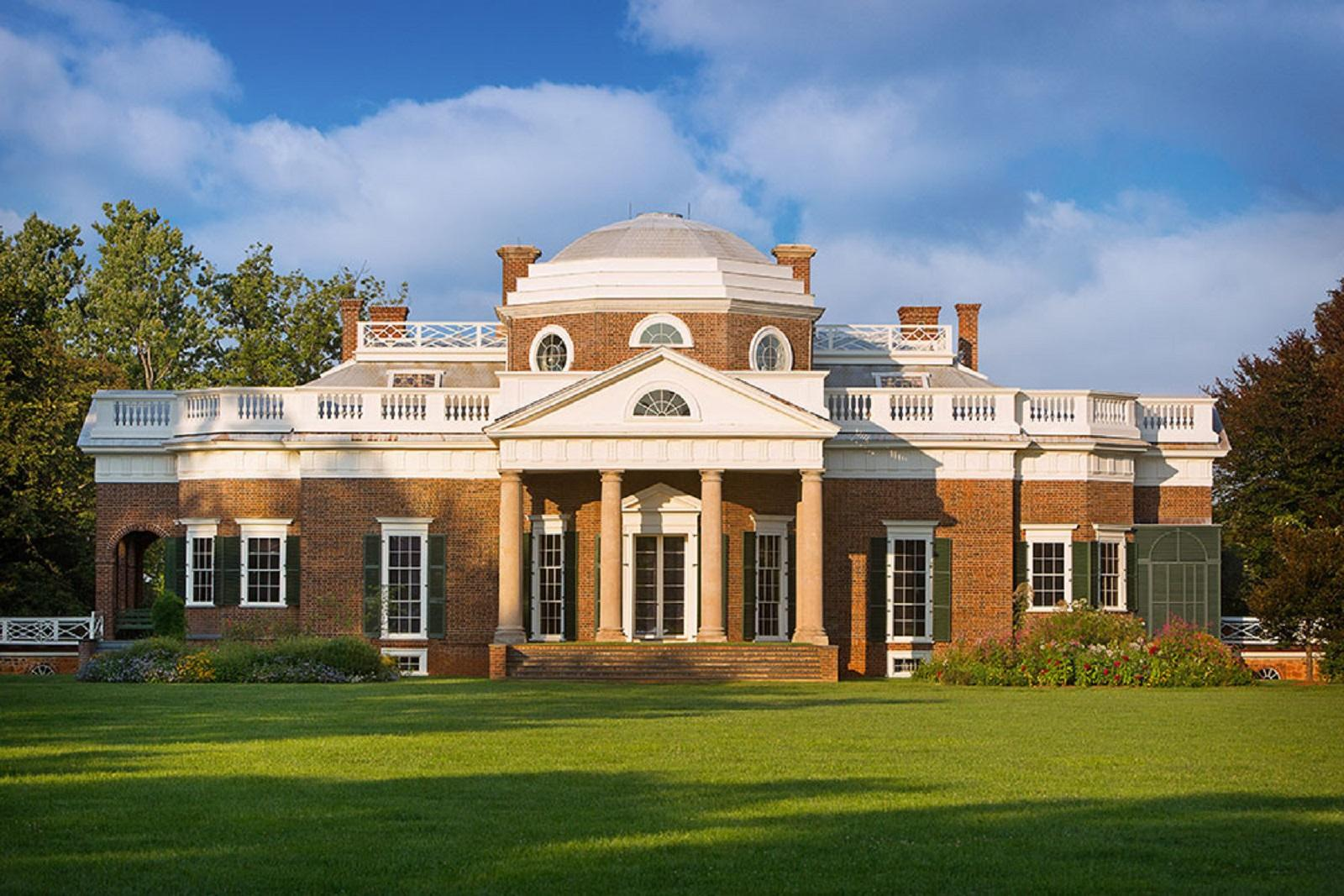
what is this?
Thomas Jefferson Monticello
near Charlottesville, VA
Neoclassical style adopted for the new nation of the US
United States
these types of buildings depict democratic values
18th century (1700-1799)
what is this?
Grand Odalisque
J.A.D Ingres
Neoclassical
France 1814 (19th century)
oil on canvas
references Venus and Allegory of Venus and Cupid (Mannerism)
classical references in the reclining nude
simple and balanced
U shaped
Odalisque is a women in a harem- kind of like a prostitute
she is a foreign women from the middle East
what two styles were popular from c. 1750-1850?
Neoclassicism and Romanticism
Napolean in the Plague House at Jaffa
Antoine-Jean Gros
Romantic
France 1804 (19th century)
oil on canvas
people are dying at the bottom which is a good indication of Romanticism- appeals to our emotions and feelings
strong and weak being depicted
dramatic lighting
Napolean is shown visiting his sick troops even though he is the one that poisoned them
primary color palette- red yellow and blue.
arches
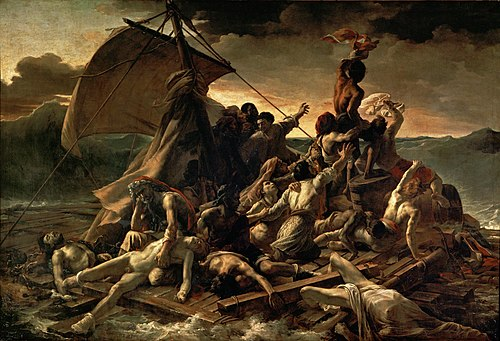
what is this?
Raft of The Medusa
Theodore Gericault
Romantic
France 1818 (19th century)
oil on canvas
history painting, biggest, most important and pretigious
medusa is a ship that had wrecked off the coast of Africa
the captain was incompetent and wrecked the ship. they did not have enough lifeboats for everyone so they left everyone to die
based on a real event
piece may reference the support for the ending of slavery
some people ate each other to stay alive
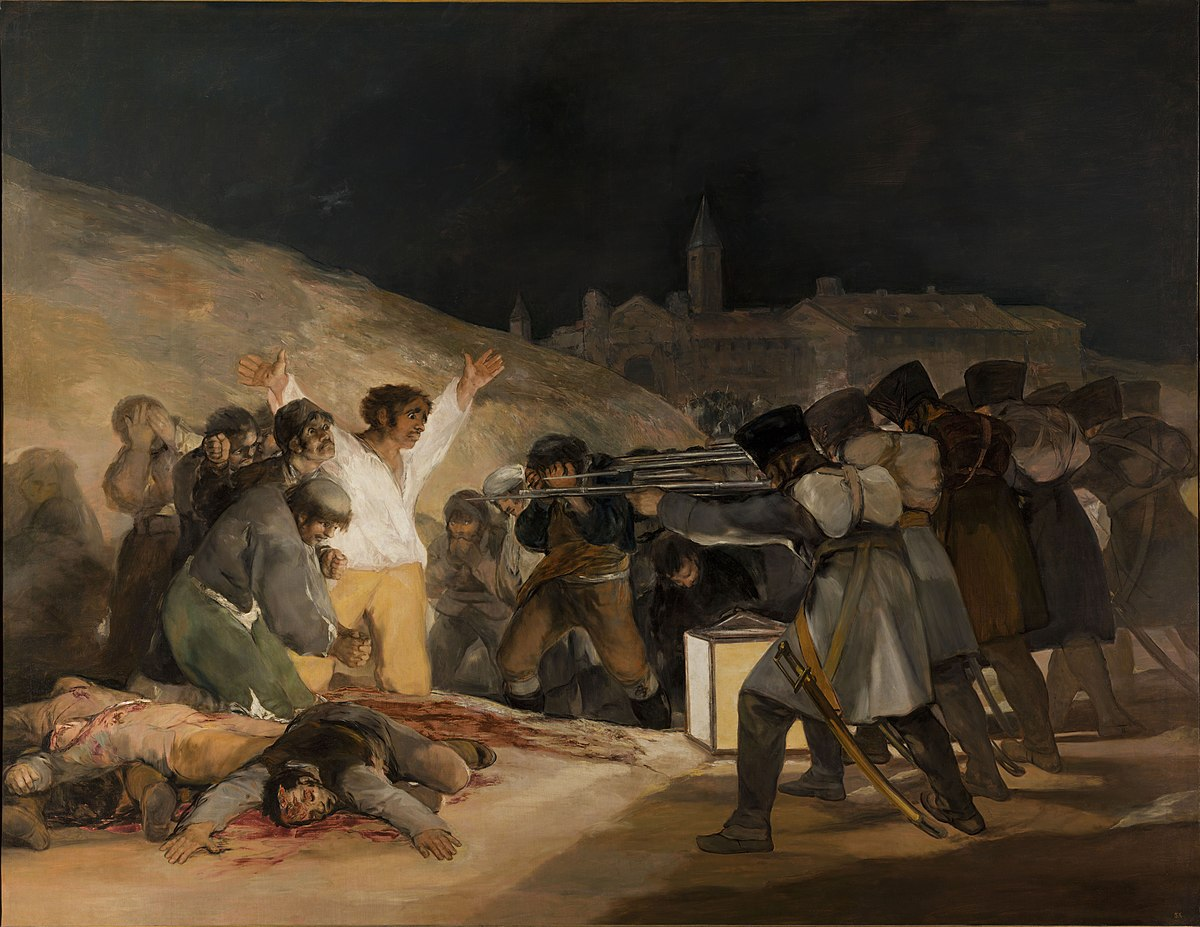
what is this?
Third of May, 1808
Fransisco Goya
Romantic
Spain 1814-1815 (19th century)
oil on canvas
man in the middle looks like he is surrendering
war is hell is the message of the piece
shows spain’s resistance to Napoleon
what is this?
Snowstorm: Hannibal and His Army Crossing the Alps
J.M.W Turner
Romantic
England 1812 (19th century)
oil on canvas
romantic piece
an example of a sublime painting- something that takes your breath away and is overwhelming to the senses
what is this?
The Oxbow (Hudson River School)
Thomas Cole
Romantic
United States 1836
oil on canvas
sublime painting

what is this?
Eiffel Tower - for the 1889 Universal Exposition
Gustave Eiffel
Paris, France (19th century)
Modern

what is this?
Kwakwaka’wakw Bird Mask
Canada
Northwest Coast
20th century
bright, flat bands and geometric shapes of primary colors and black and white
the angular eye pattern is common
the bold details could be seen easily during a performance and suggest status
human and animal forms are similar looking, suggesting their interconnection.
part of north american native cultures
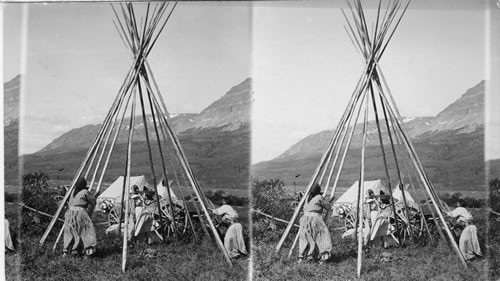
what is this?
Blackfoot Women Raising a Tipi
Great Plains
North American Native Cultures 20th century
tipis were a prominent type of work and they were portable dwellings- which made them distinct to these nomadic groups
women were in charge of these homes - setting up, taking down, decorating them with quills, beads and embroidery.
in some ways women in these groups were more respected among their communities than European women were in theirs
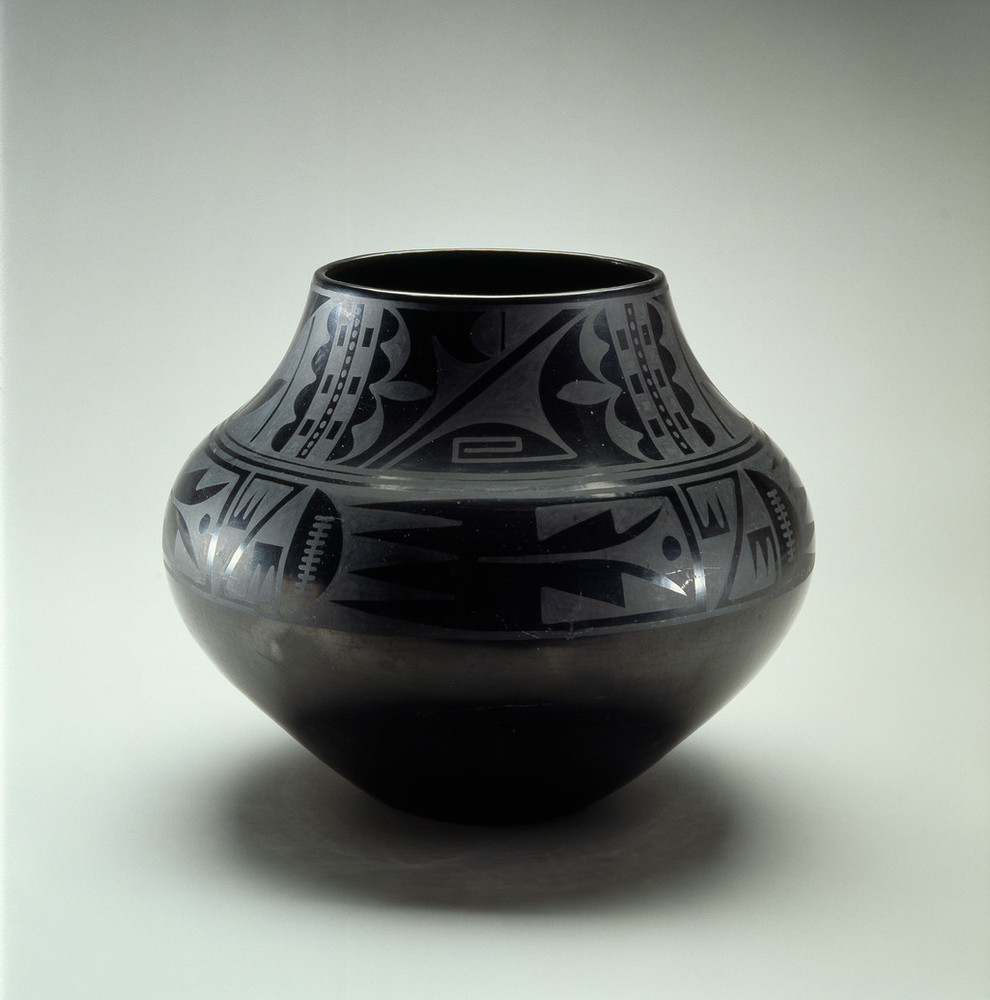
what is this?
Pueblo Storage Jar (blackware)
Maria Montoya Martinez and Julian Martinez
New Mexico
Southwest Region 20th century (1942)
abstracted, geometric designs
like many modern indigenous American artists, martinez revived traditional practices for the present
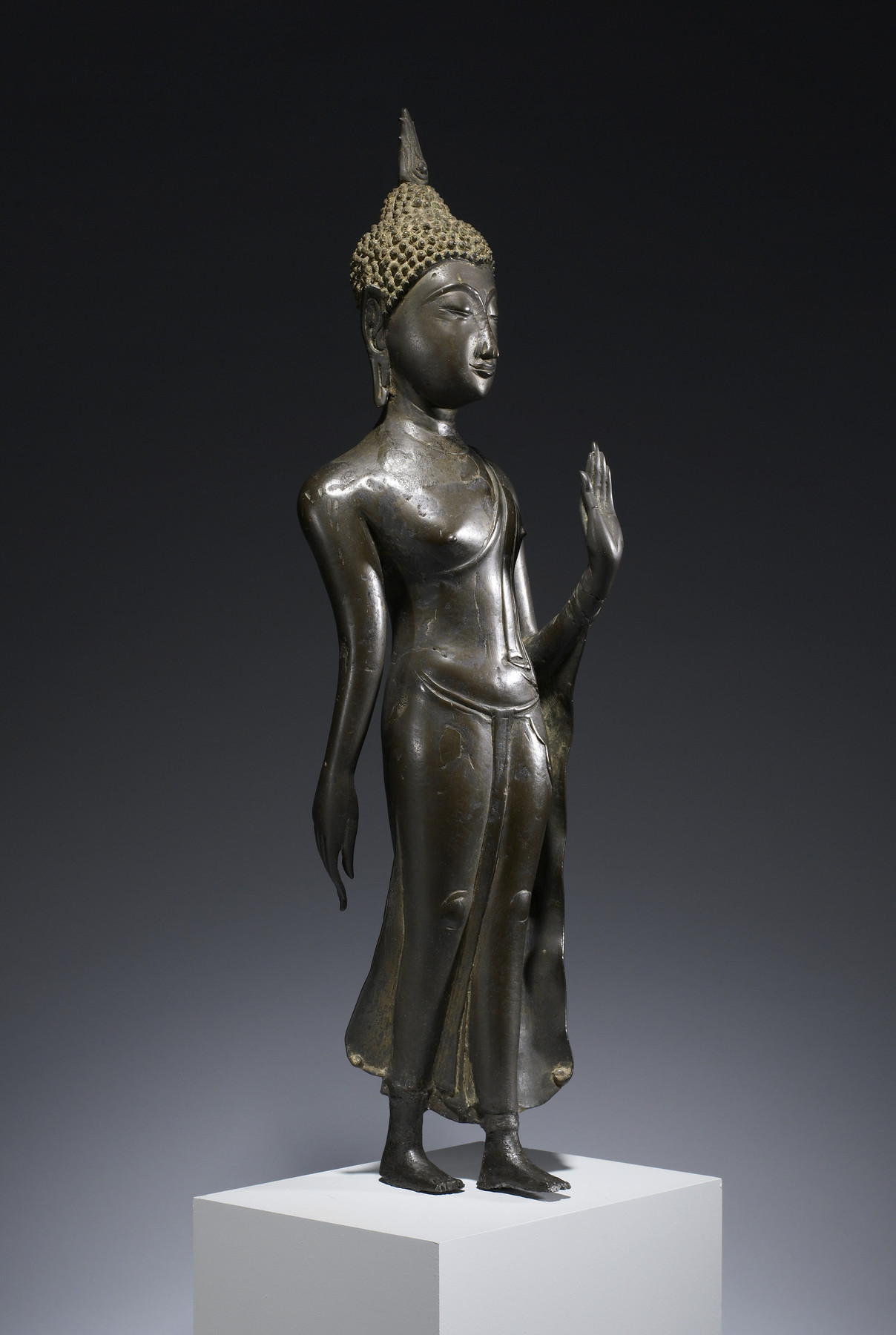
what is this?
Walking Buddha
Southeast Asia: Thailand
14th-15th centuries
dot on his forehead (inner vision/ third eye)
wisdom growing out of his head (bun)
very simple robe
long earlobes
mudras (hand gesture) saying not to worry
Taj Mahal “crown palace”
Mughal (1526-1857)
Agra, India
Commissioned by Shah Jahan
him and his wife are buried in the tomb.
Jahangir and Shah Abbas
Mughal Period (1526-1857)
India
Opaque watercolor, gold, ink on paper
Krishna and the Gopis
from the Gita Govinda
India: Mughal Period (1526-1857)
Rajput
Rajasthan, India
gouache on paper
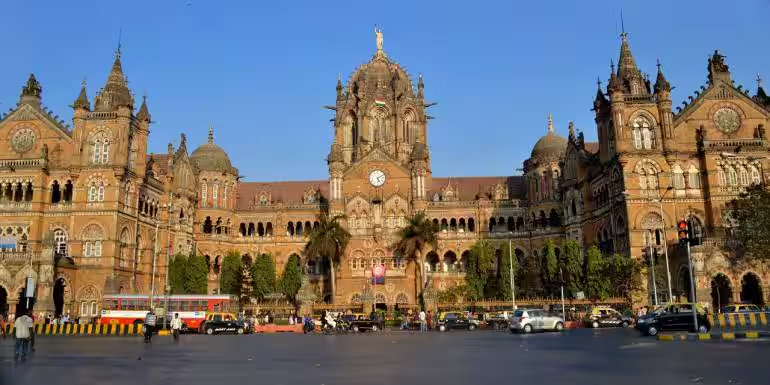
what is this?
Victoria Terminus
Frederick Stevens
Mumbai, India
Gothic Revival
India: Colonial Period, British Raj (1858-1947)
What are the basic beliefs of Islam, Hinduism, and Buddhism as reflected in the art and architecture of South and SE Asia?
What are the figures, architecture, and symbols of Buddhism?
buddha
samsara- reincarnation
nirvana- ultimate goal, release from reincarnation
stupa - sacred space that you walk around
mudras- hand gestures - hand up= do not fear
What distinguishes Mughal and Hindu architecture in purpose and form?
mughal: onion domes, archways, simple
hindu: sacred gateway, lots of decor, many gods
Compare Mughal and Rajput painting in forms and concepts.
what is etching?
a printmaking method in which acid is used to cut into a metal plate; it is printed using a printing press
what is a stupa
a mound used in buddhist worship that contains sacred objects
what are minarets?
towers that call the faithful to prayer and can represent the presence of islam
what was the Taj Mahal made to be
a mausoleum
what type of painting was the most valued type of painting in the Royal Academy during the 18th and 19th century?
history
which native american group traded with early European colonists, as reflected in a wampum belt treaty and glass bead bags?
eastern woodlands
which group is best known for their wooden totem poles?
Northwest Coast
which group is best known for tipis?
Great Plains
which group is best known for their Pueblos
Southwest
what are typical features of the Neoclassical style?
messages are usually positive and intended to teach and include themes like noble sacrifice and good behavior
simple, plain domes, columns, and round arches are common architectural features.
triangular formations are often used, and compositions are simple, symmetrical, and clearly grouped with the main figures in the center.
greco-roman stories and figures in classical clothing and settings were popular.
romanticism
emphasis on strong feelings and appeal to the imagination
themes:
horror, violence, the mysterious, unexplained or supernatural
fascination with exoticism and orientalism
techniques:
color, dramatic lighting (tenebrism), and brushstrokes to express or evoke an emotional response
David’s students (Ingres) are romantics.